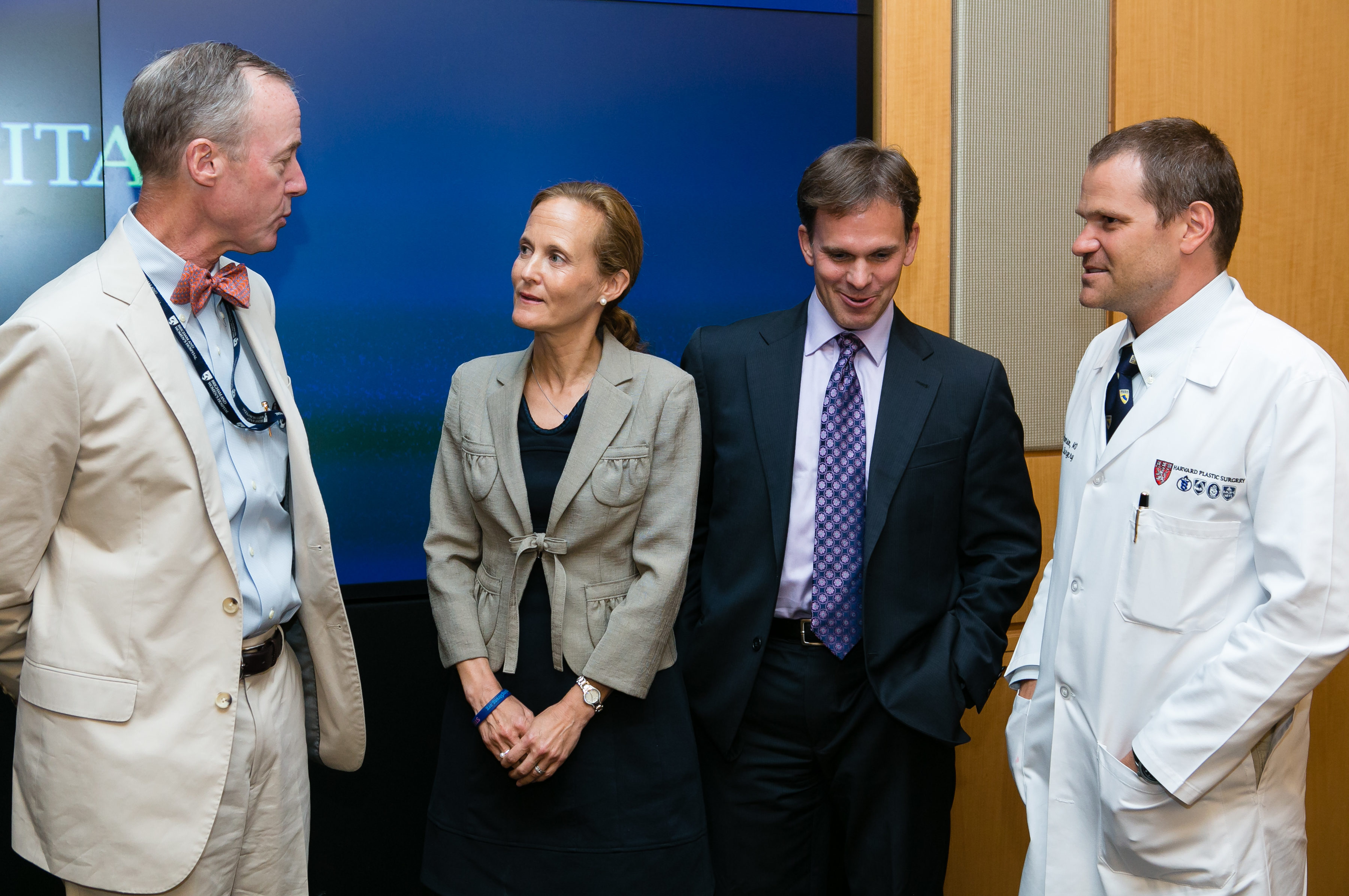
Christian E. Sampson, MD, is director of residency in plastic surgery at Brigham and Women’s Hospital and assistant professor at Harvard Medical School. Dr. Sampson will help develop the Stepping Strong Trauma Fellowship program by educating, guiding, and mentoring trauma fellows in the management of complex upper- and lower-extremity wounds.
Q: Can you talk about the procedure performed on Gillian Reny following the Boston Marathon bombing?
A: Gillian had a terrible bony injury, which the orthopedic service stabilized very well. Remarkably, the main blood vessels and nerves to her lower leg were intact. And that is what set us on the direction of limb salvage rather than amputation.
We knew Gillian was athletic—she is a dancer. And while we knew we could save the limb, we were concerned about restoring function. We came up with a plan for a free tissue transfer—that is, taking tissue from one part of her body, transferring it to the area in need, in this case her calf, and connecting the blood vessels that keep that tissue alive, which we do with a microscope. And then, we planned to place a skin graft on top of the muscle.
Given how much tissue she lost, we were worried Gillian would not have a functional limb. But after getting to know her better each day, we saw her spirit and quickly realized there was no holding this young woman back—she was going to do everything possible to succeed, which is a huge part of the recovery.
Q: The technology that allowed you to do this had to be developed and funded over a period of time. Somebody has to continue funding future projects to get to the next step. And now, the Renys, out of gratitude for everything you and the team did, want to pay it forward to others. Talk about what the Gillian Reny Stepping Strong Fund will mean for the particular area of work that you do.
A: The family has turned a horrific event into something of great promise. The establishment of a trauma fellowship through the Stepping Strong Fund is the first of its kind at the Brigham. The fund will build on the principles and techniques of reconstruction surgery with a focus on restoring function. We’re hopeful that this fund will lead to new techniques for stimulating soft tissue and bone re-growth to improve the overall function of a limb.
“We’re not just talking about getting wounds closed, but going one step further—recreating like with like, introducing functional muscle where it’s been lost, restoring better bone growth where bone has been lost. We are hopeful that techniques developed in the lab, through innovations in tissue engineering and stem cell research, will give us better methods of restoring lost tissue with similar tissue. And it will be very exciting to see this progress in the future.”
Q: Dr. Harris [chief of orthopedic trauma services] says there are stem cells that can be made into anything. So theoretically you could make new bone or new tissue in the lab. If you cast your imagination forward, what makes you especially excited?
A: The ability to create tissue in the lab and be able to use it to replace lost tissue as part of the wound closure is very exciting. We are still in the very early stages of development in terms of being able to turn stem cells on and have them produce what we want them to produce. But it is theoretically possible to do so through the fellowship.
Q: Steven Reny observed that the Brigham stood apart from its peers. What you think is different here at BWH?
A: It’s the team approach that is instilled in the culture here at BWH. It isn’t only the orthopedic service or the trauma service or the plastic surgery service. It is the team approach that allows all of us—nurses, clinicians, students, and residents—to share ideas and work together to achieve the best outcome for patients. This approach is critical, and it’s what makes BWH a great place.
Q: If you had to tell someone why they should choose to contribute and invest in the Gillian Reny Stepping Strong Fund, what would you say?
A: Funding is greatly needed. Whether a patient sustains an injury in a car accident, the military, an industrial accident, a sports catastrophe, or suffers from diseases like cancer, they deserve access to the most innovative stem cell and tissue engineering techniques for healing wounds and restoring limb functionality. Donations to the Stepping Strong Fund have an immediate and direct impact on clinical programs and critical research. We now have the opportunity to develop new, breakthrough technologies that can change the trajectory of patients’ recovery and post-trauma quality of life.
